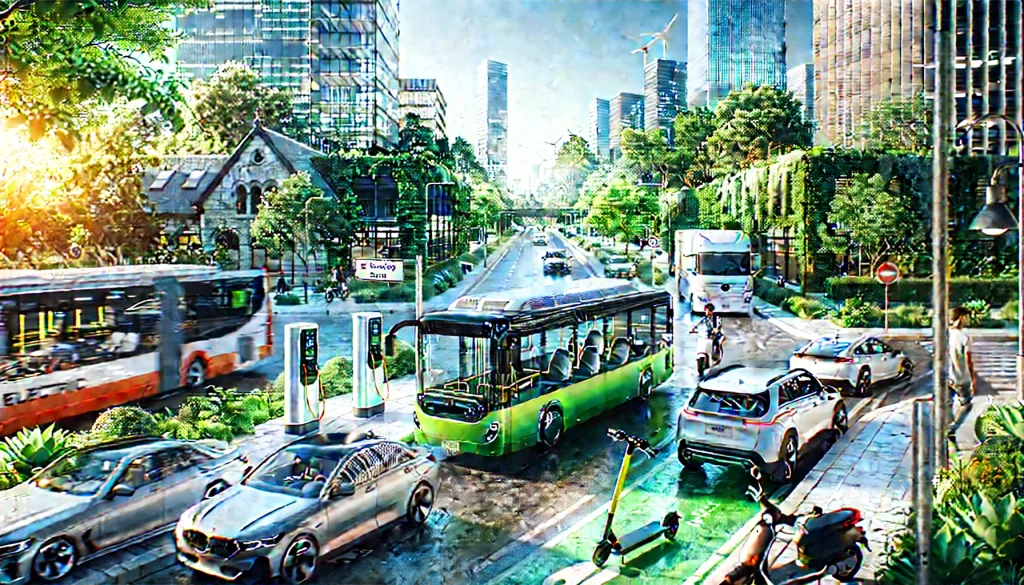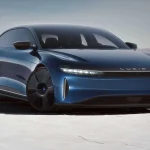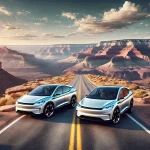The shift towards electric vehicles (EVs) is not only changing personal transportation but also redefining the landscape of urban mobility and public transport systems. As cities around the world grapple with challenges like traffic congestion, pollution, and the need for sustainable transportation solutions, electric vehicles are playing a pivotal role in the evolution of urban transportation. This article explores how electric vehicles are transforming city travel and how the integration of EVs into public transport is shaping the future of mobility.
Cleaner Air and Reduced Emissions
One of the most significant impacts of electric vehicles on urban mobility is the reduction of harmful emissions. Traditional internal combustion engine (ICE) vehicles are a major contributor to air pollution in cities, leading to health problems and environmental damage. Electric vehicles, by contrast, produce zero tailpipe emissions, which drastically reduces the amount of carbon dioxide, nitrogen oxides, and particulate matter released into the atmosphere.
The adoption of electric buses, taxis, and ride-sharing services in urban environments helps mitigate pollution levels, creating cleaner air for city residents. This shift is particularly beneficial in densely populated urban areas, where air quality has become a pressing issue. By replacing diesel and gasoline-powered public transport with electric alternatives, cities can significantly reduce their carbon footprint while improving the quality of life for residents.
Reducing Noise Pollution
In addition to reducing harmful emissions, electric vehicles are also helping to reduce noise pollution in cities. EVs are much quieter than their gasoline or diesel counterparts due to the lack of internal combustion engines, which makes urban areas less noisy and more pleasant to live in. Electric buses and delivery vehicles, which operate frequently in busy city centers, can contribute to quieter streets, especially during the night and early morning hours when noise pollution is often a problem.
Quieter electric public transport options also make city life more comfortable, encouraging people to spend more time outdoors and in public spaces. The reduction in noise pollution, combined with cleaner air, creates a more livable and welcoming urban environment.
Electrification of Public Transport Fleets
Many cities are now turning to electric buses as a way to modernize their public transportation fleets. Electric buses offer several advantages over their diesel counterparts, including lower operating costs, reduced maintenance, and the elimination of exhaust emissions. As battery technology improves and charging infrastructure expands, more cities are committing to replacing their aging bus fleets with electric alternatives.
Countries like China, the United States, and several European nations are leading the charge in electric bus adoption. For example, cities like Shenzhen in China have already fully electrified their public bus fleets, demonstrating the feasibility and benefits of this shift. The cost savings from reduced fuel consumption and maintenance, combined with government incentives and regulations aimed at reducing emissions, are driving this trend worldwide.
Beyond buses, electric trams, trolleys, and even ferries are being introduced into public transportation systems. These electrified modes of transport not only lower greenhouse gas emissions but also offer a more reliable and energy-efficient means of moving people within cities. As urban populations grow, electrifying public transportation will become an essential part of creating sustainable and resilient cities.
Electric Ride-Sharing and Micro-Mobility
Electric vehicles are also transforming urban mobility through the rise of electric ride-sharing services and micro-mobility options such as electric scooters and bikes. Companies like Uber and Lyft are increasingly incorporating electric vehicles into their fleets, offering customers a more sustainable alternative for short-distance travel. These services are ideal for reducing traffic congestion in busy city centers, where the demand for quick, clean, and efficient transportation is high.
In addition, electric bikes and scooters have become popular for short trips, particularly in cities with heavy traffic or limited parking. Micro-mobility solutions are not only reducing congestion but also making transportation more accessible and affordable for residents. Cities are beginning to invest in the necessary infrastructure, such as bike lanes and charging stations, to support these new modes of transportation, further accelerating their adoption.
Challenges to Electrification
While the benefits of electric vehicles in urban mobility are clear, there are still challenges to overcome. One of the primary obstacles is the need for widespread charging infrastructure. As more electric vehicles enter city streets, cities must invest in building an extensive network of charging stations to ensure that EVs can be easily charged during the day. This is particularly important for public transport fleets, where timely recharging is essential to maintaining schedules.
Another challenge is the high upfront cost of transitioning to electric vehicles. Although electric buses and cars are cheaper to operate and maintain over time, the initial investment required for new vehicles and charging infrastructure can be a barrier for cash-strapped municipalities. However, as the cost of batteries continues to fall and governments offer more incentives and subsidies, the transition to electrified public transport is becoming more financially viable.
Conclusion
Electric vehicles are fundamentally reshaping urban mobility and public transportation. By offering cleaner, quieter, and more efficient alternatives to traditional gasoline and diesel vehicles, EVs are helping cities address some of their most pressing challenges, from air pollution to traffic congestion. As cities around the world continue to electrify their public transport fleets and invest in ride-sharing and micro-mobility solutions, the future of urban transportation is becoming increasingly electric. The transformation is already underway, and the widespread adoption of electric vehicles will play a crucial role in creating more sustainable and livable cities for generations to come.



Love the sound of electric vehicles <3 so smooth and quiet
EVs are changing cities! 🏙️🚌 Clean, quiet, & efficient—love it! The future is electric! ⚡💚
аor sure, it’s possible… but let’s be real, there are still TONS more petrol cars on the road 😂
ev buses still lagging 🤔